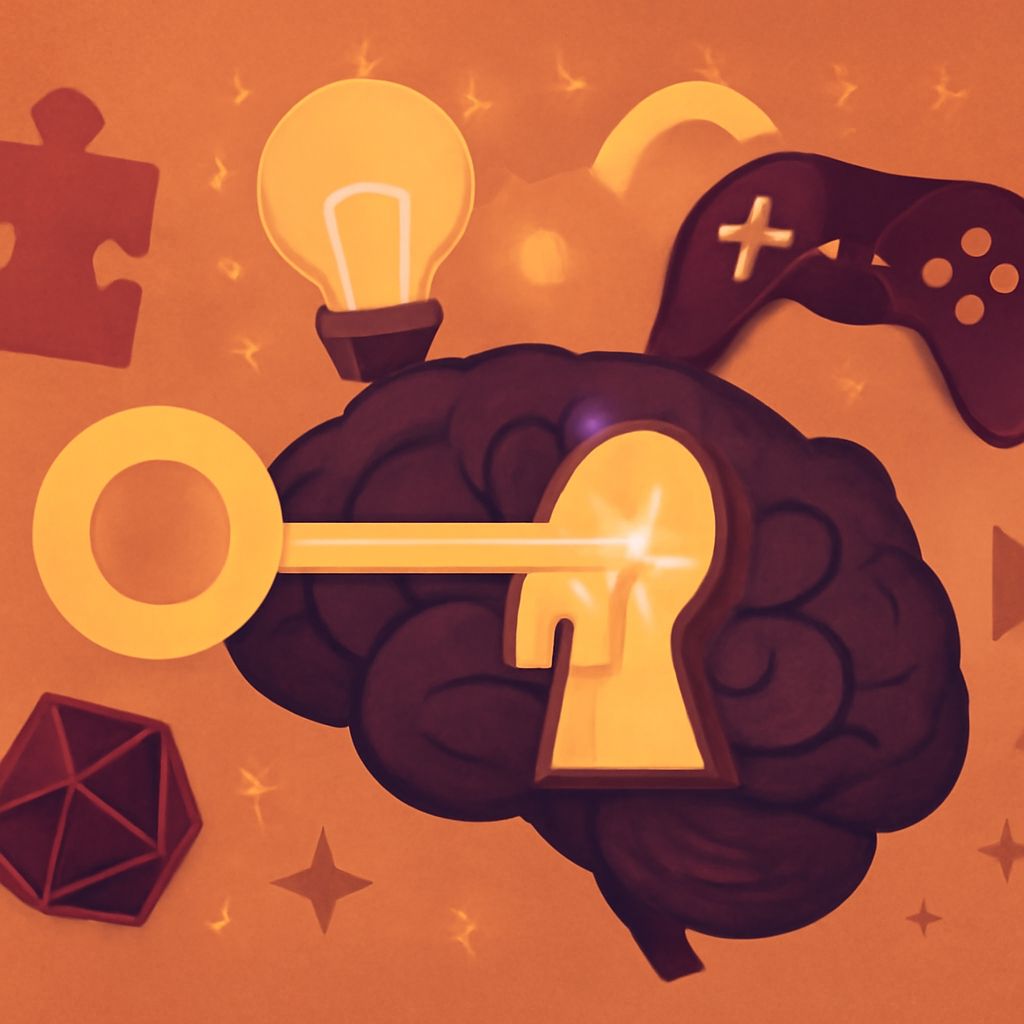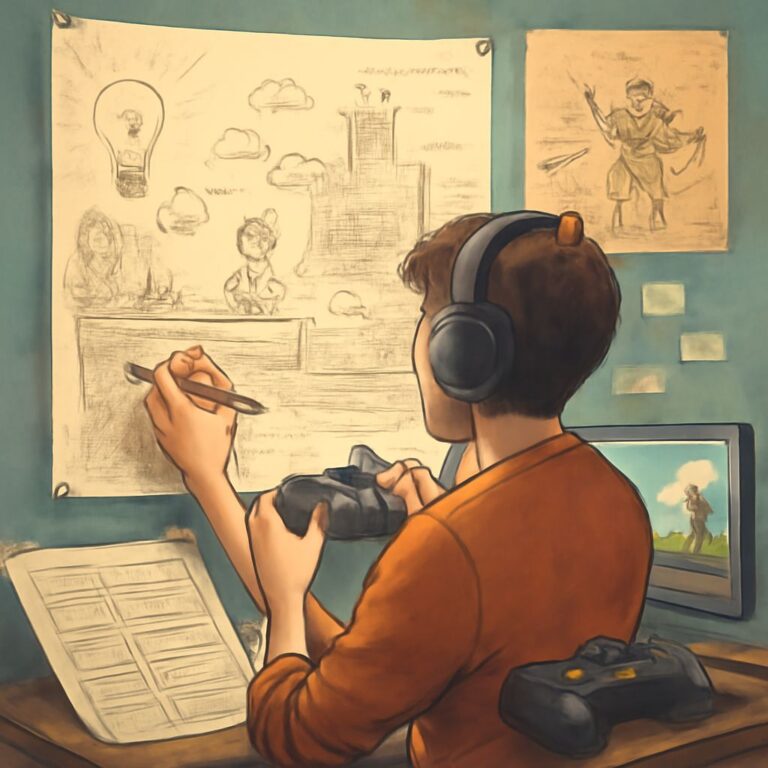Table of Contents
Unlocking Creativity: The Secrets of Effective Game Design
Game design is a complex and multifaceted craft that requires a harmonious blend of creativity, technical skills, and an understanding of player psychology. As the gaming industry continues to evolve, aspiring designers often find themselves searching for the secrets that can unlock their creative potential. This article explores the essential elements of effective game design, offering insights and strategies that can help you navigate this exciting field.
The Foundation of Game Design
At its core, game design is about creating engaging experiences that resonate with players. Understanding the foundational elements of game design is crucial for anyone looking to make a mark in the industry. Here are the key components:
- Game Mechanics: These are the rules and systems that govern gameplay. Mechanics dictate how players interact with the game world and can include anything from movement and combat to resource management.
- Storytelling: A compelling narrative can enhance player engagement. Effective storytelling in games often involves character development, plot twists, and immersive world-building.
- Art and Aesthetics: Visual design influences a player’s perception and emotional response. The art style, color palette, and overall aesthetics play a significant role in how a game is experienced.
- User Interface (UI): The UI is how players interact with the game. A well-designed interface is intuitive and enhances the overall player experience.
- Sound Design: Audio elements, including music and sound effects, contribute to the mood and atmosphere of a game. They can also provide critical feedback for player actions.
Understanding Your Audience
Before diving into the design process, it’s essential to understand the target audience. Knowing who you are designing for can inform every decision you make, from mechanics to aesthetics. Consider the following:
- Demographics: Age, gender, and cultural background can influence player preferences. Conducting market research can provide valuable insights into who your players are.
- Player Motivations: Different players are motivated by different aspects of games. Some may seek competition, while others prefer exploration or storytelling. Identifying these motivations can guide your design choices.
- Feedback and Playtesting: Engaging with your audience through feedback and playtesting can provide crucial insights. Players can offer perspectives that may not be apparent during the design process.
The Design Process
The design process is an iterative journey filled with brainstorming, prototyping, and refinement. Here’s a breakdown of the typical stages involved in game design:
| Stage | Description |
|---|---|
| Pre-production | Initial brainstorming and conceptualization of the game idea. Designers outline the game’s vision, goals, and core mechanics. |
| Prototyping | Creating a basic version of the game to test mechanics and concepts. Prototypes can be digital or physical (for tabletop games). |
| Production | The main development phase where the game is built. This includes coding, asset creation, and implementing gameplay elements. |
| Testing | Conducting playtests to gather feedback and identify bugs or design issues. This phase may involve multiple iterations. |
| Launch | Releasing the game to the public. This stage often involves marketing and community engagement to maximize reach and impact. |
Fostering Creativity in Game Design
Unlocking creativity is an ongoing challenge for many designers. Here are several strategies to help foster your creative potential:
- Embrace Constraints: Limitations can spark creativity. Constraints force designers to think outside the box and find innovative solutions to problems.
- Collaborate with Others: Working with a diverse team can lead to fresh perspectives and ideas. Collaboration can also help refine concepts through constructive feedback.
- Explore Other Media: Drawing inspiration from books, movies, and art can provide new ideas and narrative techniques. Cross-pollination between different forms of media can lead to unique game concepts.
- Iterate on Feedback: Gather feedback regularly and be open to criticism. Each iteration should bring your game closer to your vision by incorporating player insights.
- Stay Curious: Continuously explore new trends, technologies, and gameplay mechanics. The gaming industry is always evolving, and staying informed can keep your designs fresh.
Case Studies in Effective Game Design
To understand what makes a game truly effective, let’s examine a few case studies of successful titles that exemplify great game design:
The Legend of Zelda: Breath of the Wild
This open-world adventure game revolutionized the franchise with its emphasis on exploration and player agency. Key design elements include:
- Freedom of Exploration: Players can approach challenges in multiple ways, fostering creativity and encouraging experimentation.
- Environmental Storytelling: The game world itself tells stories through its design, inviting players to discover lore as they explore.
- Dynamic Interactions: The interplay between different game systems (e.g., weather and physics) allows for creative problem-solving.
Among Us
This social deduction game became a phenomenon due to its engaging mechanics and social interaction. Notable design features include:
- Simple Mechanics: Easy-to-understand rules make the game accessible to a wide audience, allowing for quick onboarding.
- Social Interaction: The game thrives on player communication, making each round a unique social experience.
- Replayability: The dynamic nature of player roles ensures that no two games are the same, encouraging repeated play.
The Future of Game Design
As technology advances, the future of game design holds numerous possibilities. Innovations in virtual reality, augmented reality, and artificial intelligence offer exciting avenues for creativity. Here are a few trends to watch:
- Immersive Experiences: VR and AR technologies will continue to transform how players interact with game worlds, creating more immersive and engaging experiences.
- AI and Procedural Generation: AI can enhance gameplay experiences by generating dynamic content tailored to individual players’ actions and preferences.
- Community-Driven Development: Games are increasingly being developed with player input, using community feedback to shape content and features.
In conclusion, unlocking creativity in game design is a journey that requires a deep understanding of the core principles, audience insights, and a robust design process. By embracing collaboration, iterating on feedback, and staying informed about industry trends, aspiring designers can cultivate their creativity and contribute to the ever-evolving world of gaming. Whether you are crafting your first indie project or aiming for a blockbuster title, the secrets of effective game design are within your reach.
FAQ
What are the essential elements of effective game design?
Effective game design incorporates engaging gameplay mechanics, a compelling narrative, intuitive controls, and balanced difficulty levels to ensure player satisfaction.
How can storytelling enhance game design?
Storytelling can enhance game design by creating emotional connections with players, providing context for gameplay, and driving player motivation through immersive narratives.
What role does player feedback play in game design?
Player feedback is crucial in game design as it helps developers understand user experiences, identify issues, and make informed improvements to enhance overall gameplay.
Why is playtesting important in the game design process?
Playtesting is vital in game design because it allows developers to observe real player interactions, gather feedback, and refine game mechanics to improve the final product.
How can game designers foster creativity during development?
Game designers can foster creativity by encouraging brainstorming sessions, exploring diverse influences, and allowing for experimentation and iteration throughout the design process.
What are some common pitfalls to avoid in game design?
Common pitfalls in game design include lack of clear goals, underestimating player engagement, neglecting user experience, and failing to iterate based on feedback.


